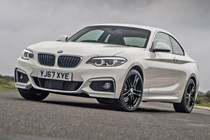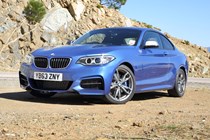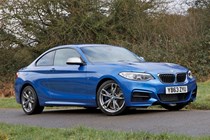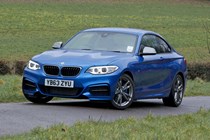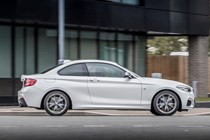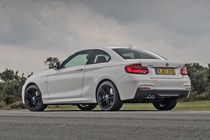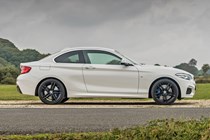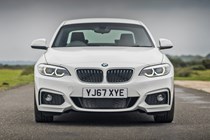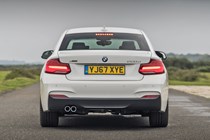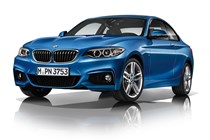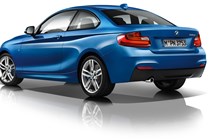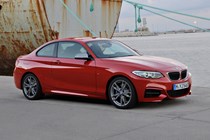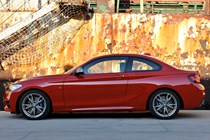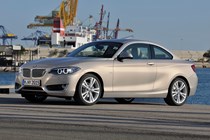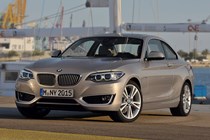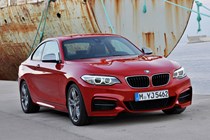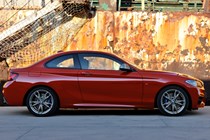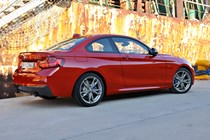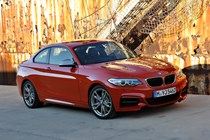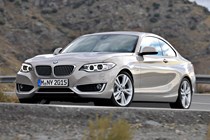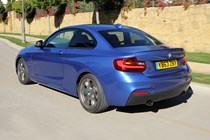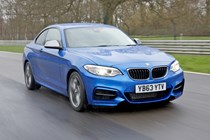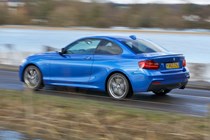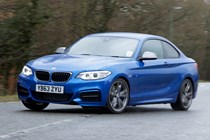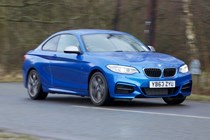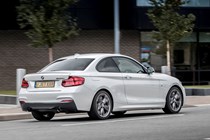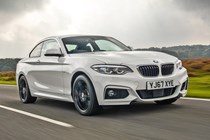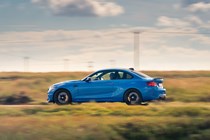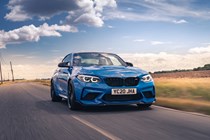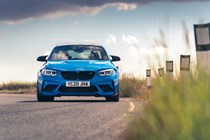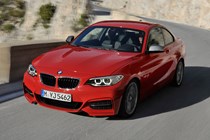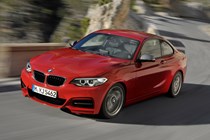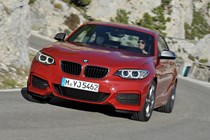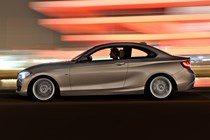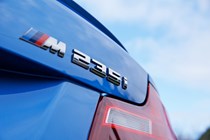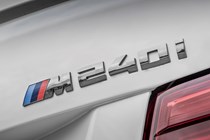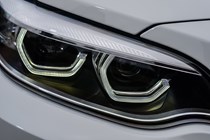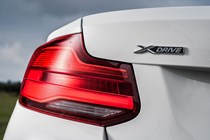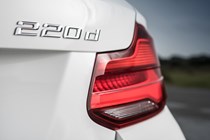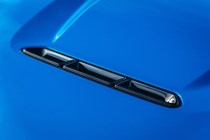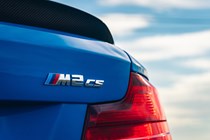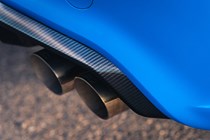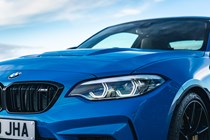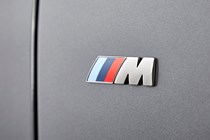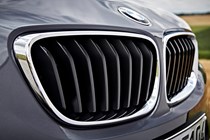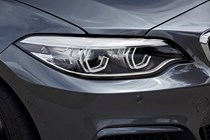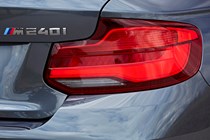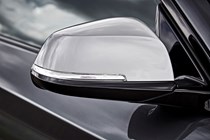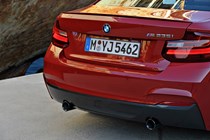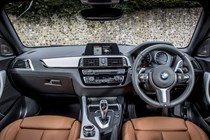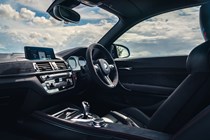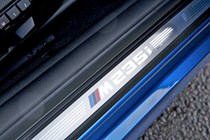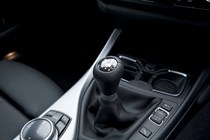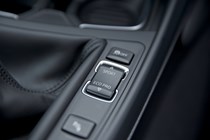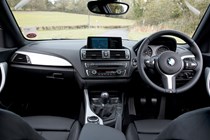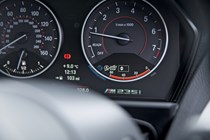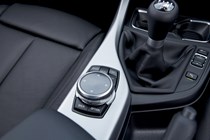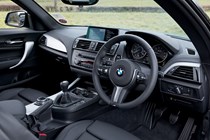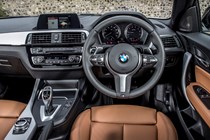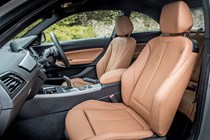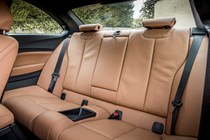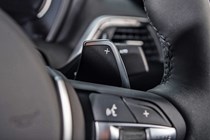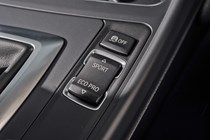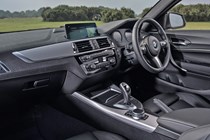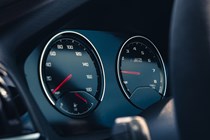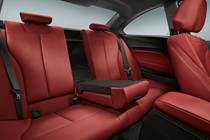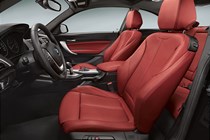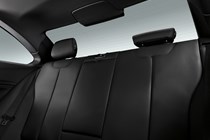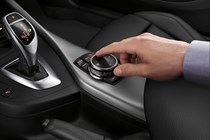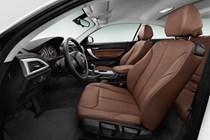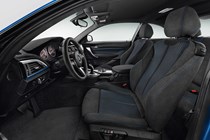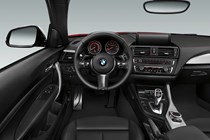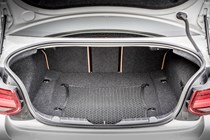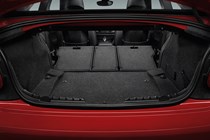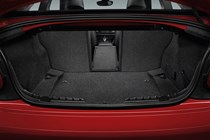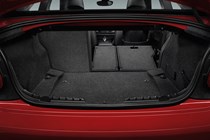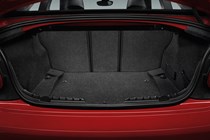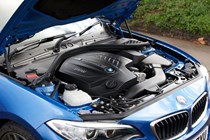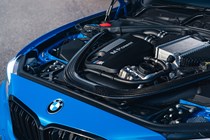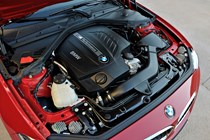
BMW 2-Series Coupe engines, drive and performance
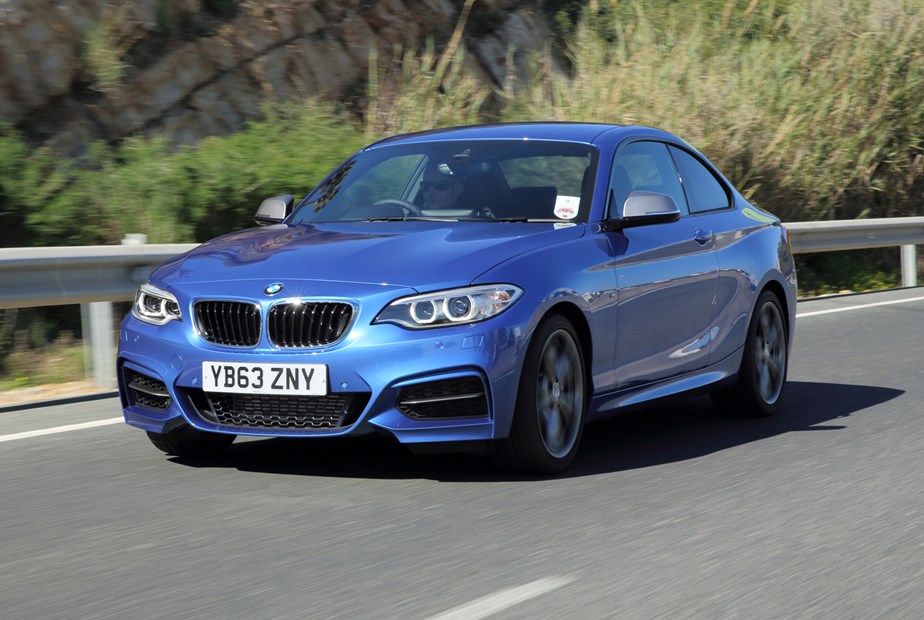
- Wide range of petrol and diesel engines on offer
- Mid-range 220d packs a punch and excellent fuel economy
- Eight-speed Sport Automatic available across the range
There’s a multitude of petrol and diesel engine variations on offer in the 2 Series Coupe. However, it’s important to note that the final two numbers in the model name – for example ‘18’ in 218i – don’t necessarily correspond with the actual size of the engine in litres like they did on most BMWs of old.
Petrol engines
The smallest petrol engine available in the 2 Series Coupe is the turbocharged 1.5-litre 218i. Boasting 136hp and 220Nm of torque, it’s capable of accelerating from 0-62mph in 8.8 seconds (8.9 for the automatic) and onto a top speed of 131mph.
Upgrade to the 220i and you’ll actually have a 2.0-litre engine, developing 184hp and 270Nm of torque. Consequently, 0-62mph is rated at 7.2 seconds while top speed is 143mph. This one’s automatic-only.
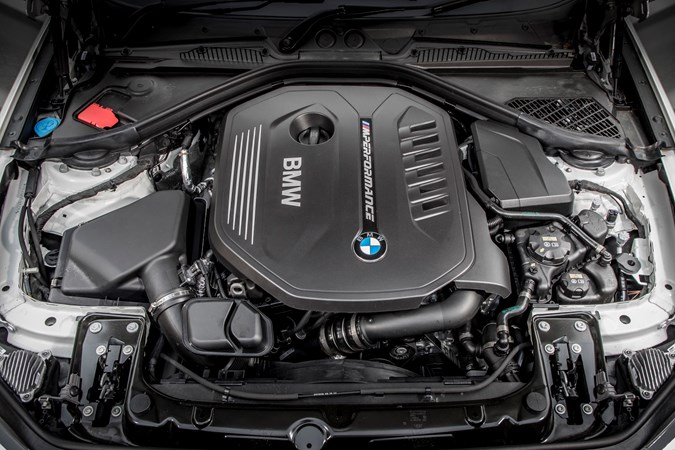
Topping the petrol engines in terms of punch and our recommendation is the 340hp M240i. Its top speed is electronically limited to 155mph, while the dash from 0-62mph is taken care of in an impressive 4.6 seconds (there used to be a manual version, that was slightly slower at 4.8). Torque from the 3.0-litre inline-six-cylinder engine is a hefty 500Nm, meaning you’ll encounter few moments where there’s insufficient pulling power to execute a swift overtaking manoeuvre.
Desirable diesels
The 2 Series Coupe diesel engine line-up starts with the entry level 2.0-litre 218d packing 150hp and 320Nm of torque. This is enough to propel the car from 0-62mph in 8.5 seconds (8.3 for the automatic) and onto a top speed of 132mph.
Move up to the 220d, for us the most desirable 2 Series in the real world, and while engine size stays the same, performance improves to a 7.2-second (7.1 with the automatic gearbox, 7.0 with xDrive all-wheel drive) 0-62mph time and 143mph top speed (140mph with xDrive). Power is rated at 190hp, while torque is a chunky 400Nm.
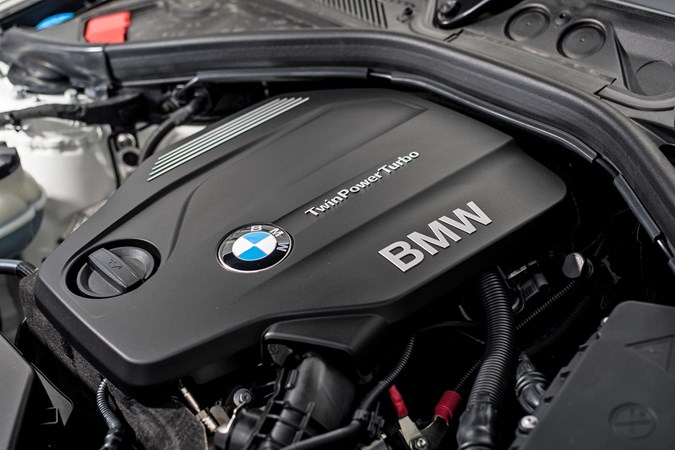
In 220d guise, the BMW provides all the performance, economy and usability that most customers will require. Refinement is excellent all-round, while there’s a good dose of pulling power especially low down in the rev range. Keen drivers, however, may prefer an engine with a touch more character such as that in the M240i, but the 220d’s miserly fuel economy makes it a winner in our books.
Engines no longer available
BMW used to offer even punchier engines to fill the gap between the 20-suffix models and the M240i.
First up was the 230i, which although had an engine size identical to the 220i, power and torque were both noticeably increased, standing at 252hp and 350Nm respectively. This equated to a 5.6-second 0-62mph time and a top speed of 155mph.
Topping the diesel range in terms of potency was the 224hp 225d, capable of accelerating from 0-62mph in 6.2 seconds and a top speed of 151mph. Torque is rated at 450Nm.
Gearbox assessment
An eight-speed Sport Automatic transmission is available across the 2 Series Coupe range. It’s smooth and quick to change up through the gears, although downshifts can be a little tardy in manual override mode. Setting the Sport Automatic apart from the regular auto on less expensive 2 Series models is the fact that it comes with paddles mounted on the steering column to shift gears.
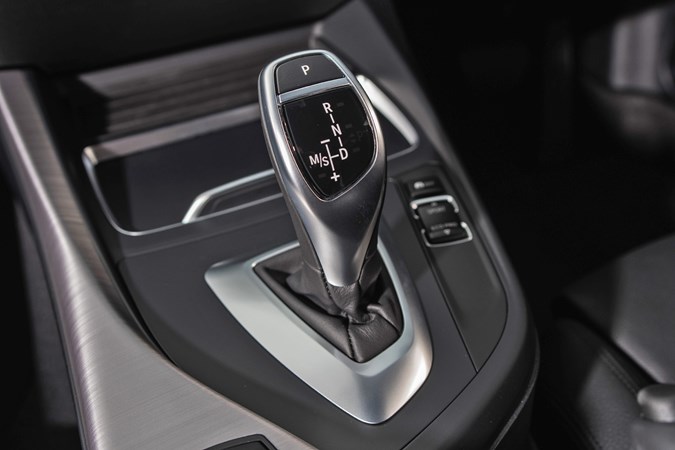
The six-speed manual version, meanwhile, is a satisfying gearbox to use with a nice short throw action as you switch between gears.
Performance M2 Competition and M2 CS versions
For those who want to really enjoy the performance potential of their 2 Series Coupe, BMW makes the excellent M2 Competition with a 410hp 3.0-litre straight-six engine and sub-4.5-second 0-62mph time. It also benefits from improved handling, upgraded brakes and seriously-impressive beefy bodywork upgrade to show to the world that this is no ordinary 2 Series.
However, if only the best will do, then step forward the fastest M2 that money can buy. The CS gets a range of performance upgrades over the already rapid Competition model. These include an extra 40hp (450hp in total) from the straight-six 3.0-litre engine, adaptive M suspension as standard (a first for the M2) and an eye-catching spread of carbon fibre parts for both the interior and exterior.
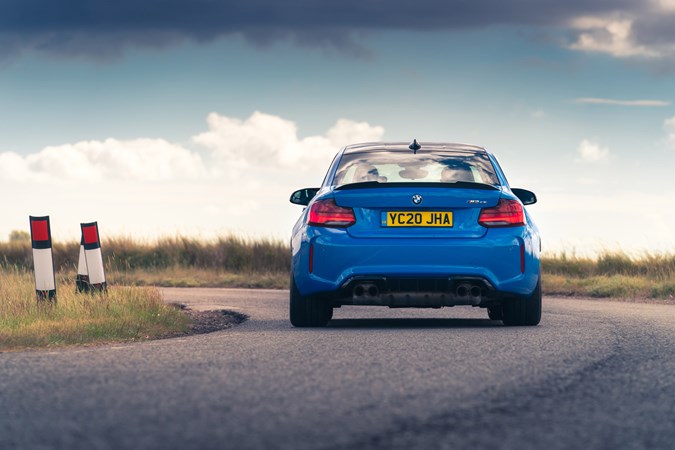
Available with a six-speed manual or seven-speed double-clutch transmission, the M2 CS hits 0-62mph in 4.2 and 4.0 seconds respectively, with an electronically limited top speed of 174mph. Dry-weather optimised Michelin Pilot Sport Cup 2 tyres are standard.
The differences between M2 Competition and M2 CS aren’t huge, yet there’s an appreciable sense of greater agility and enjoyment in the latter. It corners that bit harder and delivers its power higher up the rev range. Yet, interestingly, the C2 is actually more comfortable than the Competition owing to its standard fit adaptive suspension.
Impressive 2 Series Coupe handling
- Lots of traction and superb overall handling
- More powerful models bring the best out of the car
- xDrive all-wheel drive version offers additional security
The first thing worth noting about the 2 Series Coupe is that, unlike almost all of its rivals, the BMW uses a standard rear-wheel drive setup. This means that power is sent only to the rear wheels, with the end result a typically sportier- and sharper-feeling car.
However, where this may have been the case with BMWs of the last 15 years, current models tend not to feel particularly rear-wheel drive-biased when paired with smaller, less-powerful engines. For example, we drove the 220d on optional adaptive suspension and although it handled very tidily with real poise and stability, it didn’t feel all that different to the versions fitted with xDrive all-wheel drive. Sure, that system will give you more traction in slippery conditions, but for the most part it’s not a vital upgrade.
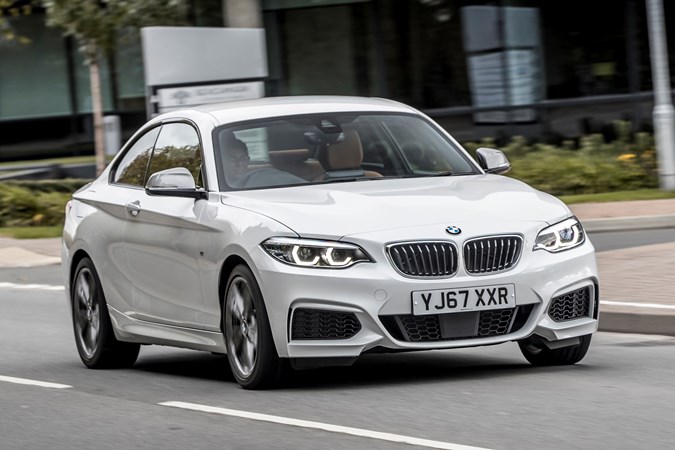
Upgrade to the faster M240i, however, and the rear-wheel drive setup comes into its own. The car feels more adjustable and playful, with the opportunity – when safe – to make the rear of the car break traction and take a wider radius around corners than the front of the car.
Overall traction levels are high across the range, plus the steering is relatively quick and direct, if a touch inconsistent in its weighting (it can sometimes feel too light at speed). Get the 2 Series on a twisty country road and you’ll realise why BMWs are so often lauded for their handling qualities.
You can have fun with the 2 Series, but you’ll need the most powerful engine to really enjoy it.


